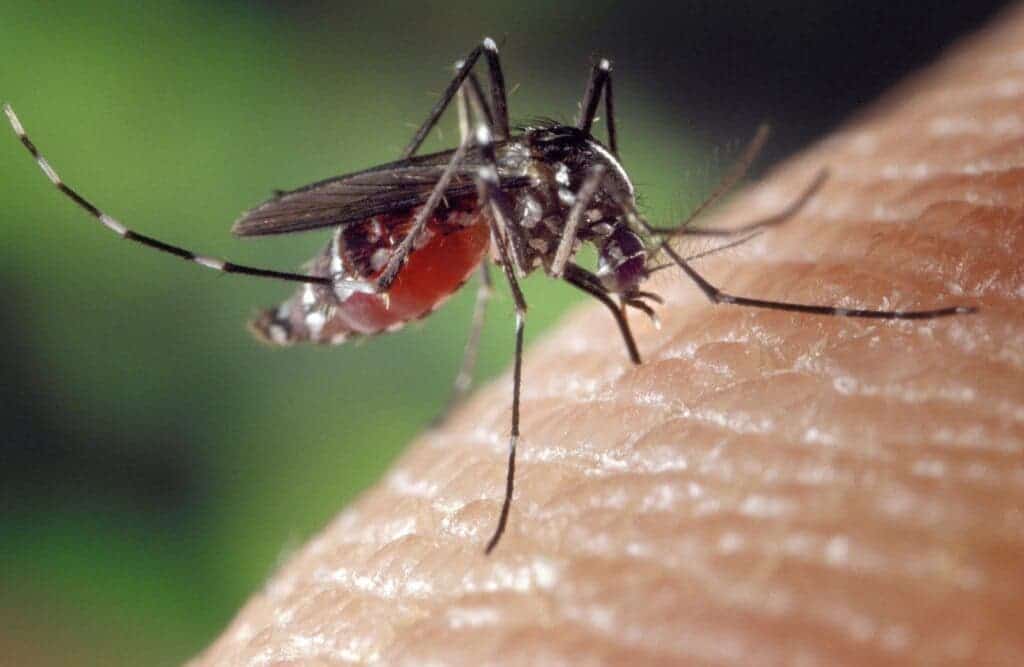
According to the World Health Organization, three-quarters of a million people are killed each year by mosquito-borne illnesses, with malaria alone accounting for nearly 600,000 deaths. A lot of resources have been poured into research to lessen this crippling disease burden, resulting in a number of promising leads. Some solutions include infecting mosquitoes with a strange bacterium that prevents the insects from transmitting malaria and even drastic genetic tweaks that makes female Anopheles gambiae mosquitoes sterile.
Other researchers, such as neurobiologist Leslie Vosshall from Rockefeller University, are looking into hijacking mosquitoes’ sense of smell to make them less attracted to the odor of humans. This is the primary way that female mosquitoes identify blood-rich hosts — and the attraction is truly irresistible. For example, research shows that mosquitoes are attracted to both carbon dioxide that people exhale and the smell of the human body. But when the two odors combine, the attraction isn’t twice as much, but rather twenty times as much. That’s really puzzling — what inside the mosquito olfactory system triggers this ferocious appetite for human blood?
Vosshall was part of the team that previously sequenced the first complete genome of a mosquito. Now, Vosshall and former postdoc Meg Younger tried to decrypt this puzzle by tracing the pathways of signals triggered by carbon dioxide and body odor in the insect’s brain.
What they found isn’t good news at all, finding that the mosquito olfactory system is more complex than previously thought, which means it’s a lot more difficult to confuse. In fact, it might actually be impossible to trick the insect’s sense of smell. But in the process of carrying out this research, the scientists also found compelling evidence that challenges some entrenched notions about smell being processed in the brain. If anything, that’s a big win.
In 1991, Linda Buck and Richard Axel from Columbia University published one of the most influential biology papers in recent history. The two researchers pinpointed 1,000 types of olfactory receptors in mice, all found in the back of the nose, in a region called the olfactory epithelium. These receptors are proteins that bind to the volatile molecules that make up odors and fragrances, allowing the brain to recognize individual scents.
This study solved the mystery of how the olfactory system detects smells and was awarded the 2004 Nobel Prize in Physiology and Medicine. But Buck wasn’t done yet. After moving to Harvard University, she discovered how signals from these receptors create the impression of different odors. Each olfactory neuron has just one type of receptor, which is supposed to detect a specific set of chemicals. While humans have only 350 of these receptors, we can distinguish among 10,000 or more smells because each olfactory receptor can detect more than one odorant and each odorant can be detected by more than one receptor. When these receptors work together they form a combinatorial network that can form odorant patterns to identify specific odorants.
“We as a field were so influenced by Buck and Axel,” says Vosshall, who was a postdoc in Axel’s lab. “Those were the rules.”
But when the researchers used the gene-editing tool CRISPR to generate a fluorescent marker protein in the neurons that had receptors for CO2 and another marker for those that could sense chemicals from body odor, they found something startling: individual neurons were packed with multiple types of receptors, not just one as has been the established dogma for more than two decades now.
“All the Buck and Axel rules were thrown in the garbage can by mosquitoes,” says Vosshall.
The researchers first made this discovery years ago. They then spent a lot of time repeating their experiments and employing new methods to validate the findings through other lines of evidence, anticipating the skepticism and pushback from the scientific community. For instance, they used a novel technique called single nucleus RNA sequencing (snRNA-seq) to probe which genes are turned on in individual neurons, confirming that each olfactory neuron has indeed many kinds of receptors. In another experiment, with the help of scientists at the Swedish University of Agricultural Sciences, the team even managed to stick electrodes into individual mosquito olfactory neurons and measure the electrical potential in response to various smells. This method yet again confirmed the original findings.
The evidence is now overwhelming that the insect olfactory system is much more complex than previously thought, and it also makes sense considering how well mosquitos are able to detect humans, essentially hunting us down.
Now, the bad news is that these findings show that blocking some receptors, say using some chemical formulation, will not keep the mosquitoes at bay. They can find the smell of blood just as easily with other receptors.
Next, the researchers want to focus on the puzzle that started this whole journey: why combining carbon dioxide and body odor amplifies the olfactory signal in the brain.
The findings appeared in the journal Cell.









